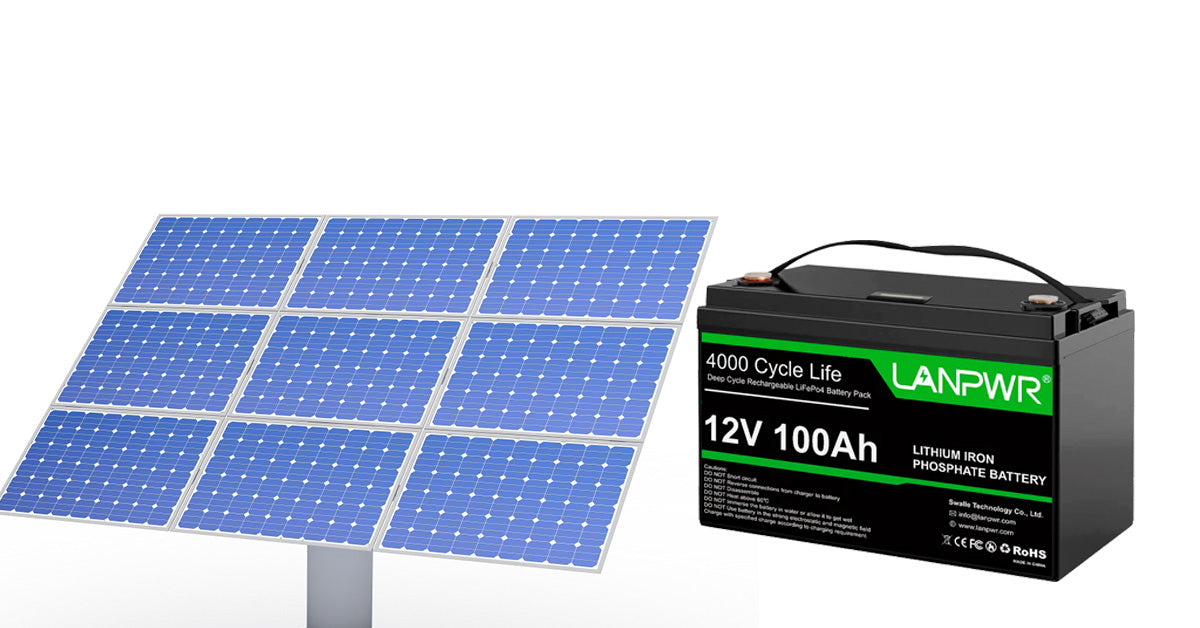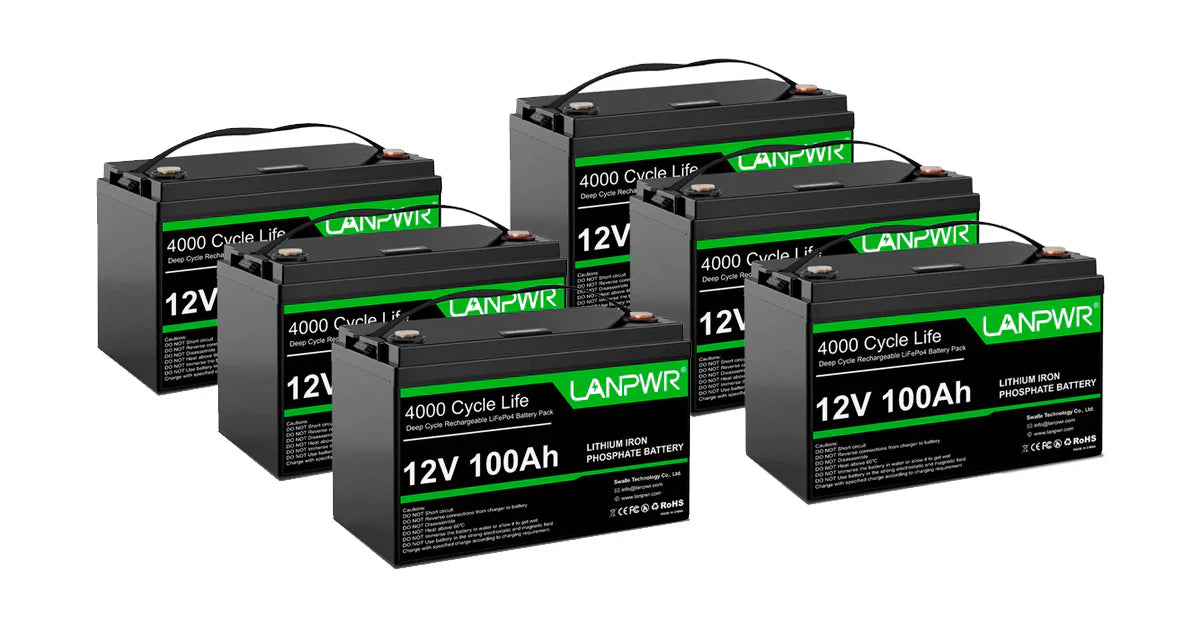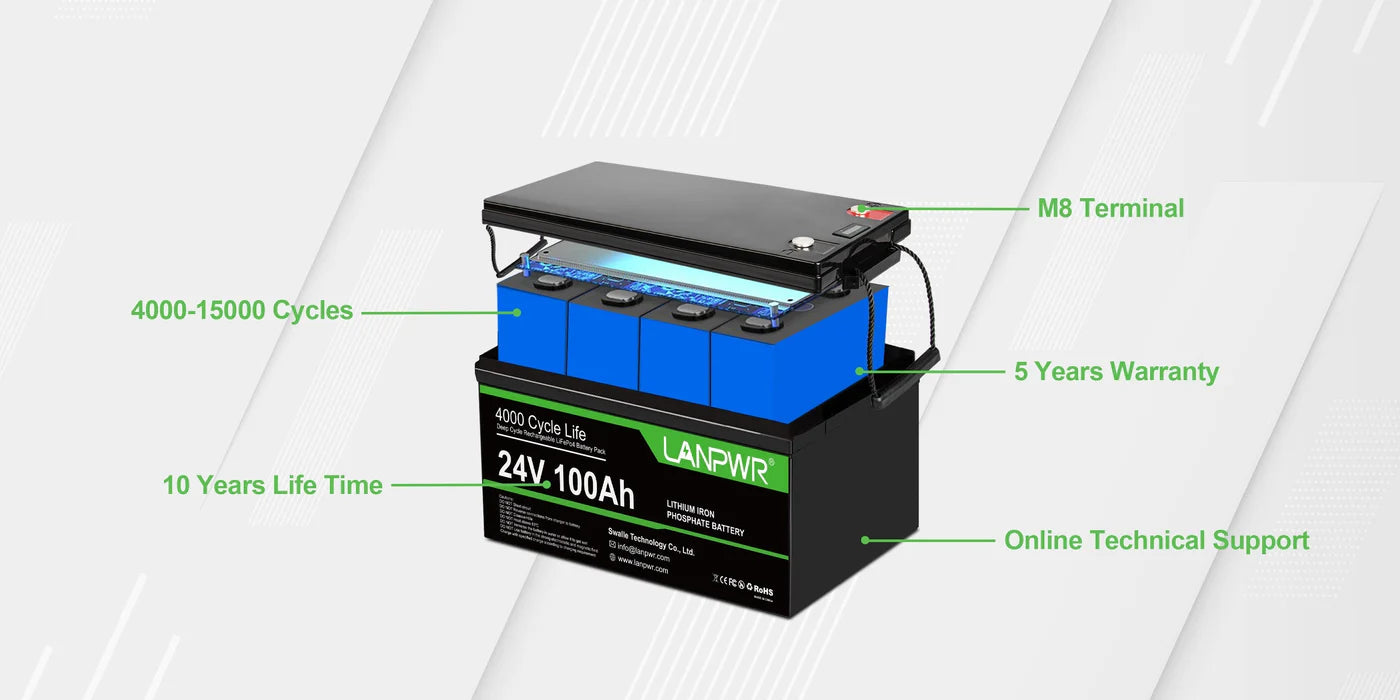
Lithium Iron Phosphate (LiFePO4) batteries have become one of the go-to choices in modern battery technology for their durability and safety. They are frequently found in applications from electric vehicles to solar energy storage and portable electronic devices, offering significant advantages over their lithium-ion counterparts.
Understanding LiFePO4 Batteries
LiFePO4 batteries are a type of lithium-ion battery that uses lithium iron phosphate as the cathode material. They were first introduced into circulation in the late 1990s. Widely popular among high-power applications and situations that demand long-term dependability and safety, LiFePO4s have gained prominence since being first utilized.
LiFePO4 batteries offer a long lifespan.
Lithium Iron Phosphate (LiFePO4) batteries are prized for their long lifespans, making them appealing choices when long-term reliability is essential for applications such as backup power. Below, we detail some factors influencing LiFePO4 battery lifespan and what can typically be expected of them in terms of longevity.
Cycle Life
While measuring battery lifespan is usually done using cycle life as one metric, LiFePO4 batteries stand out for having exceptional cycle lives compared to other lithium-ion options - often up to 8 cycles complete charge/discharge cycles before reaching below an agreed percentage (typically 80%) of original capacity. LiFePO4s, in particular, stand out for having long cycle lives that outshone other forms of Li-ion technologies:
Standard Lifespan of LiFePO4 Batteries: Under normal operating conditions and at depths of discharge up to 80%, LiFePO4 batteries typically offer between 2,000 and 5,000 cycles with depths of discharge between 30% and 40%, providing years of reliable service when utilized for solar energy storage or electric vehicle applications.
Extended Battery Lifespan: With careful management including reduced depth of discharge and optimal temperatures/charging parameters some high-grade LiFePO4 batteries may last well beyond 10,000 cycles.
Calendar Life
Calendar life refers to the total lifespan of LiFePO4 batteries regardless of cycle count; in other words, how long they would remain undamaged from their date of manufacture until finally used up or thrown away (depending on its use case). They stand out in this aspect as well.
Duration: The lifespan of LiFePO4 batteries often ranges between 10-15 years due to their inherent stability derived from lithium iron phosphate chemistry that does not degrade as quickly compared with other forms of lithium-ion battery technology.
Factors Affecting LiFePO4 Battery Lifespan
Multiple factors can significantly limit the lifespan of LiFePO4 batteries:
Depth of Discharge (DoD)
Discharging batteries to near capacity before recharging tends to shorten their lifespan; restricting how deeply they discharge before charging back up can significantly extend the battery's lifetime. Limiting their depth of discharge could significantly extend the battery lifespan.
Charging Practices
Always adhere to manufacturer specifications when charging batteries for optimal battery performance and longevity. An important aspect is using compatible chargers with compatible voltage settings.

Temperature
Like other batteries, LiFePO4 cells can be extremely susceptible to temperature extremes. Prolonged exposure to high temperatures may accelerate their degradation, while low temperatures can temporarily reduce performance and capacity. Therefore, operating and storing them within their recommended temperature ranges for optimum longevity is key to prolonging their lifespan.
Usage Frequency
How often a battery is cycled can also impact its lifespan; more frequent or intense usage usually leads to quicker capacity reduction over time.
Maintenance
Routine care, such as regular inspection and balance charge checks, will extend the lifespan of LiFePO4 batteries.
Applications Benefitting from LiFePO4 Batteries
LiFePO4 batteries are an exceptional source of versatility, ideal for many different uses across a spectrum of industries and environments. Some critical applications where their extended lifespan and stability have proven particularly helpful:
Electric Vehicles (EVs): Lithium batteries are ideal for electric vehicle applications due to their safety, long cycle life, and thermal stability, all critical qualities needed in automotive environments.
Solar Energy Storage: LiFePO4 batteries offer ideal solar storage options due to their long lifespan, supporting thousands of cycles at deep discharge depths - ideal for renewable energy storage needs.
Marine Applications: LiFePO4 batteries' ability to withstand harsh marine environments while supporting deep discharge cycles makes them perfect for powering electronic equipment on boats, such as GPS navigational equipment.
Portable Power Stations: Batteries used in portable power stations have become an increasing choice due to their lightweight, energy efficiency, and long-term power output reliability.
Backup Power Systems: For UPS (Uninterruptible Power Supplies) and other backup applications, LiFePO4 batteries provide reliable power during outages without frequent replacement needs.
Optimize LiFePO4 Batteries' Utilization for Maximum Efficiency
To maximize the advantages of LiFePO4 batteries and extend their service lives, follow these practices:
- Proper Charging -For optimal battery health and extended cycle life, aim to charge it between 90% and 91% each time rather than 100% every time. Also, be certain that the charging voltage and current fall within the manufacturer's specified range.
- Avoiding Deep Discharges- Although LiFePO4 batteries generally respond better than other types to deep discharges, restricting discharge depth to 20-30% less than its maximum depth can significantly extend battery cycles and service life.
- Temperature Management -Temperature control is vital for batteries. Extreme temperatures, such as high heat, can accelerate battery degradation. Insulation or an advanced temperature monitoring system may provide protection and help ensure optimal performance over time.
- Regular Maintenance- Conduct regular checks of your battery for signs of wear or damage and ensure all cells in a battery pack are evenly balanced. Unbalanced cells could lead to underutilization of total capacity and place extra strain on it.
- Usage Optimization- Reduce battery idle time, as prolonged inactivity may decrease performance over time. Regular usage within recommended guidelines helps preserve battery health.














Leave a comment
This site is protected by hCaptcha and the hCaptcha Privacy Policy and Terms of Service apply.